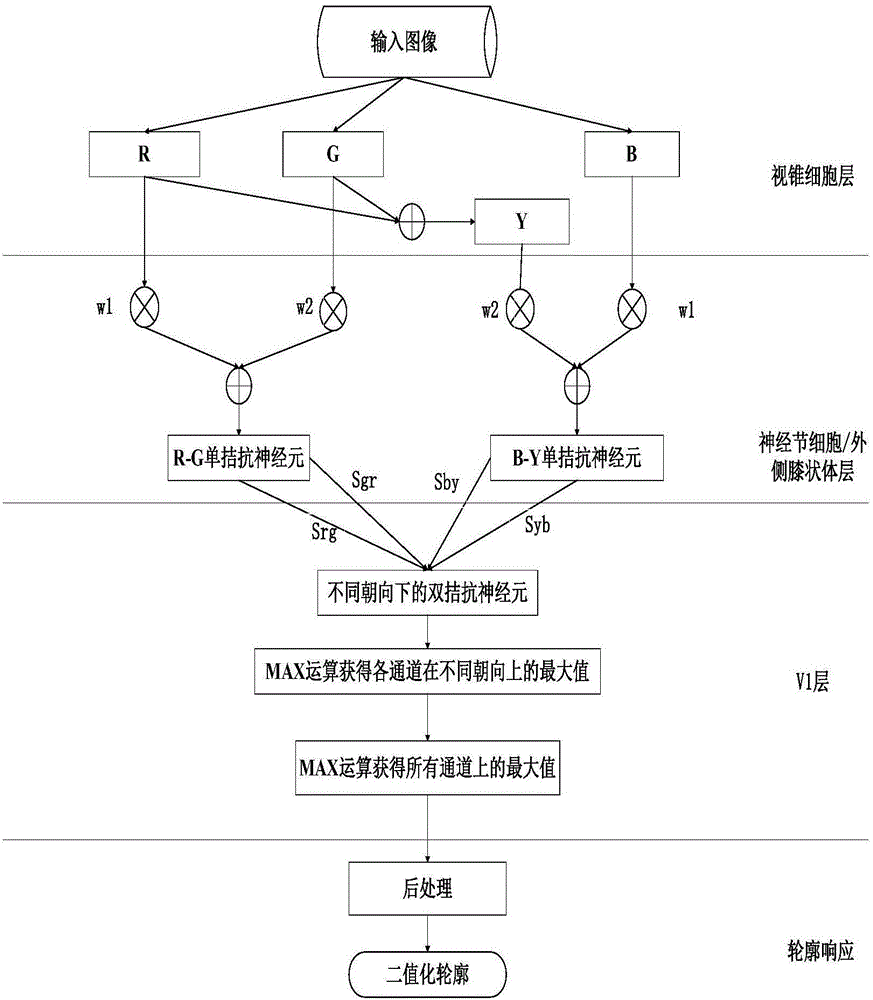Contour and boundary detection algorithm based on visual color theory and homogeneity inhibition
A boundary detection and color technology, applied in computing, image data processing, image analysis, etc., can solve time-consuming problems
- Summary
- Abstract
- Description
- Claims
- Application Information
AI Technical Summary
Problems solved by technology
Method used
Image
Examples
example
[0202] Below to Figure 8 The shown image is taken as an example to further describe the present invention in detail. The present invention will be further described below in conjunction with the accompanying drawings and embodiments. The present invention mainly comprises the following steps: processing of cone cells, processing of ganglion / lateral geniculate body, processing of V1 area of visual cortex, homogeneous inhibition, contour detection model based on visual color theory and homogeneous processing, post-processing deal with.
[0203] (1) Processing of cone cells
[0204] The input image stimulus is first divided into three color channels by cone cells: red, green, and blue color channels, which are represented by R(x,y), G(x,y), and B(x,y) respectively. The construction of the yellow channel Y(x,y) based on the theory of three primary colors can be expressed by the following expression:
[0205] Y(x,y)=(R(x,y)+G(x,y)) / 2
[0206] Assuming that the input image i...
PUM
 Login to View More
Login to View More Abstract
Description
Claims
Application Information
 Login to View More
Login to View More - R&D
- Intellectual Property
- Life Sciences
- Materials
- Tech Scout
- Unparalleled Data Quality
- Higher Quality Content
- 60% Fewer Hallucinations
Browse by: Latest US Patents, China's latest patents, Technical Efficacy Thesaurus, Application Domain, Technology Topic, Popular Technical Reports.
© 2025 PatSnap. All rights reserved.Legal|Privacy policy|Modern Slavery Act Transparency Statement|Sitemap|About US| Contact US: help@patsnap.com



